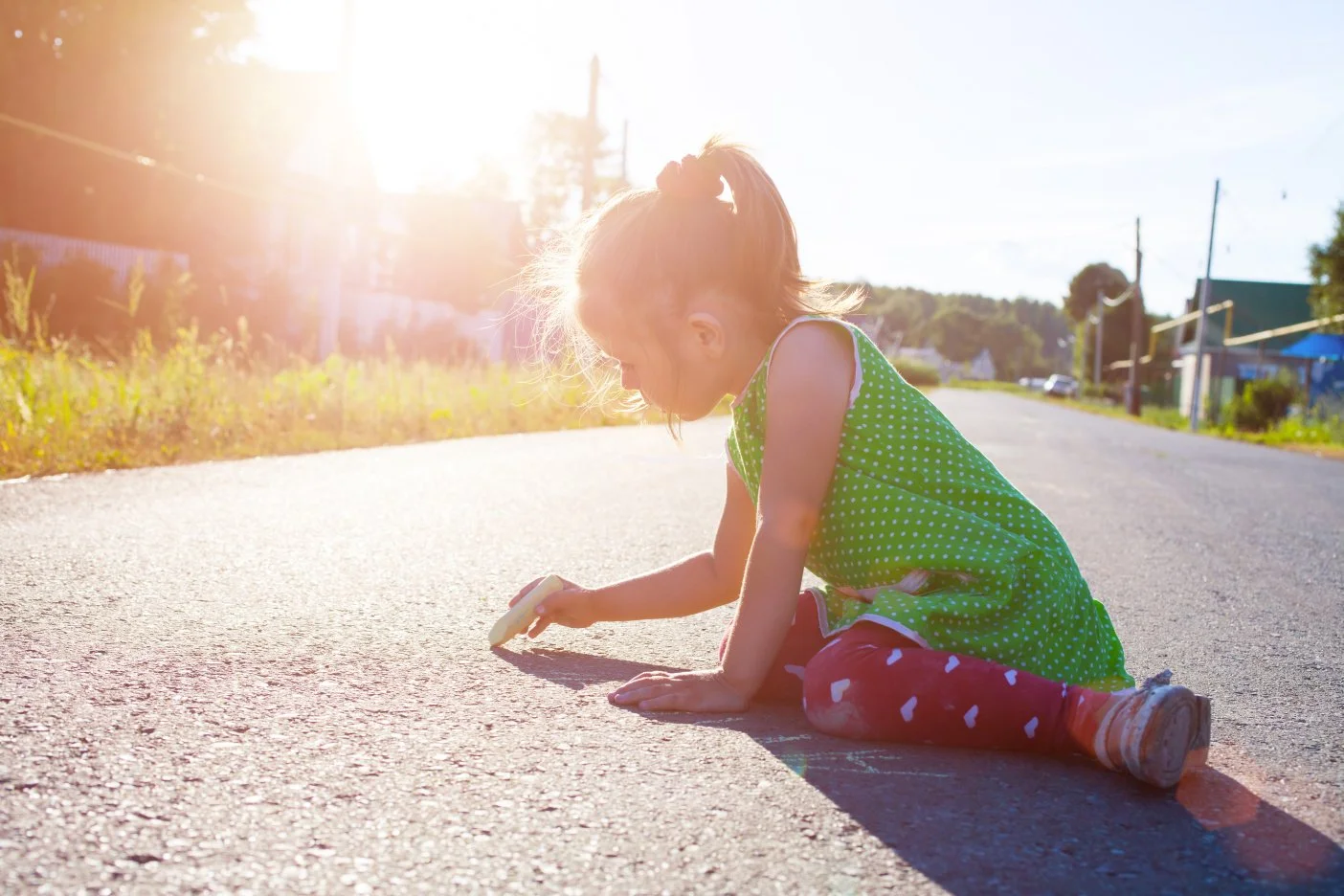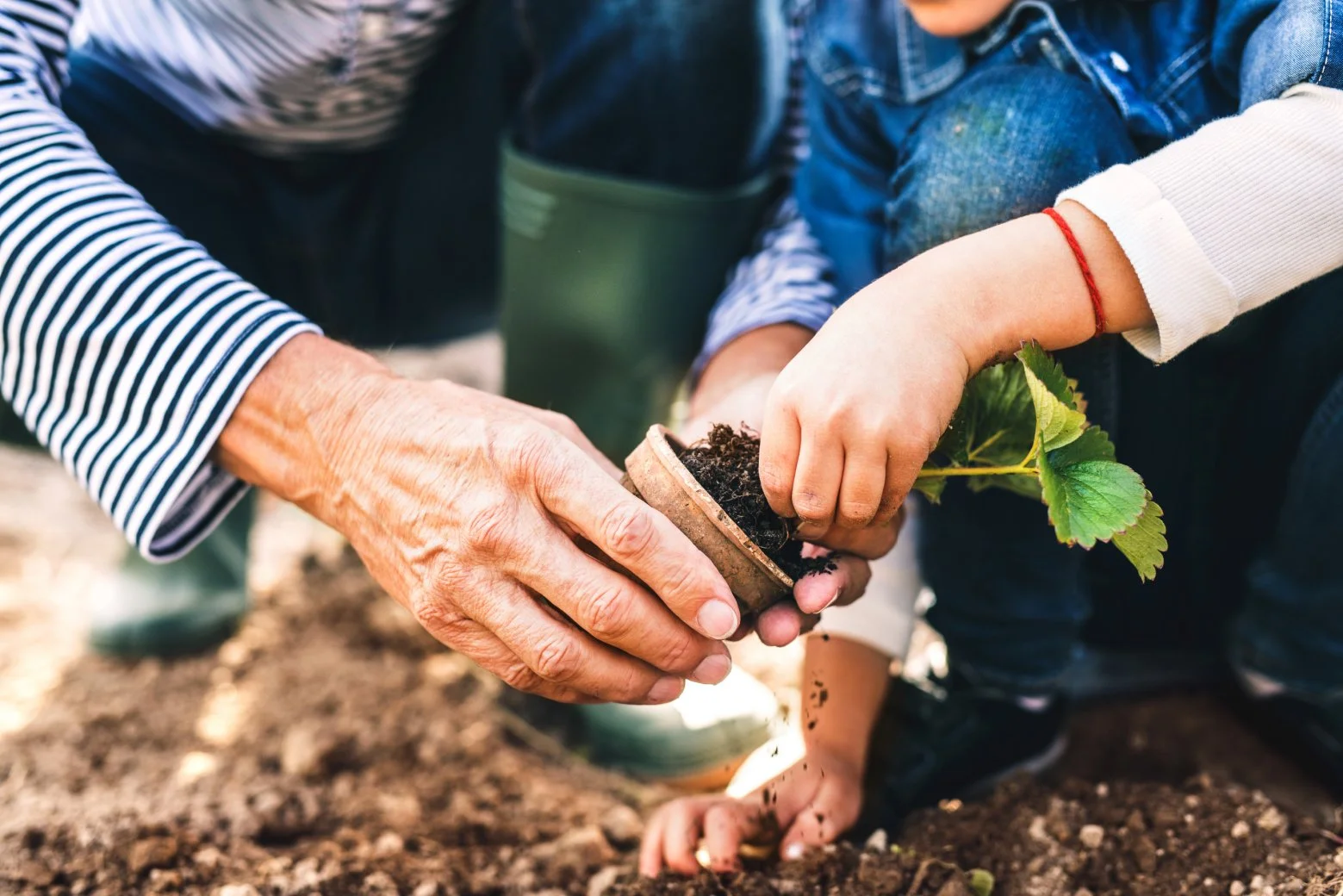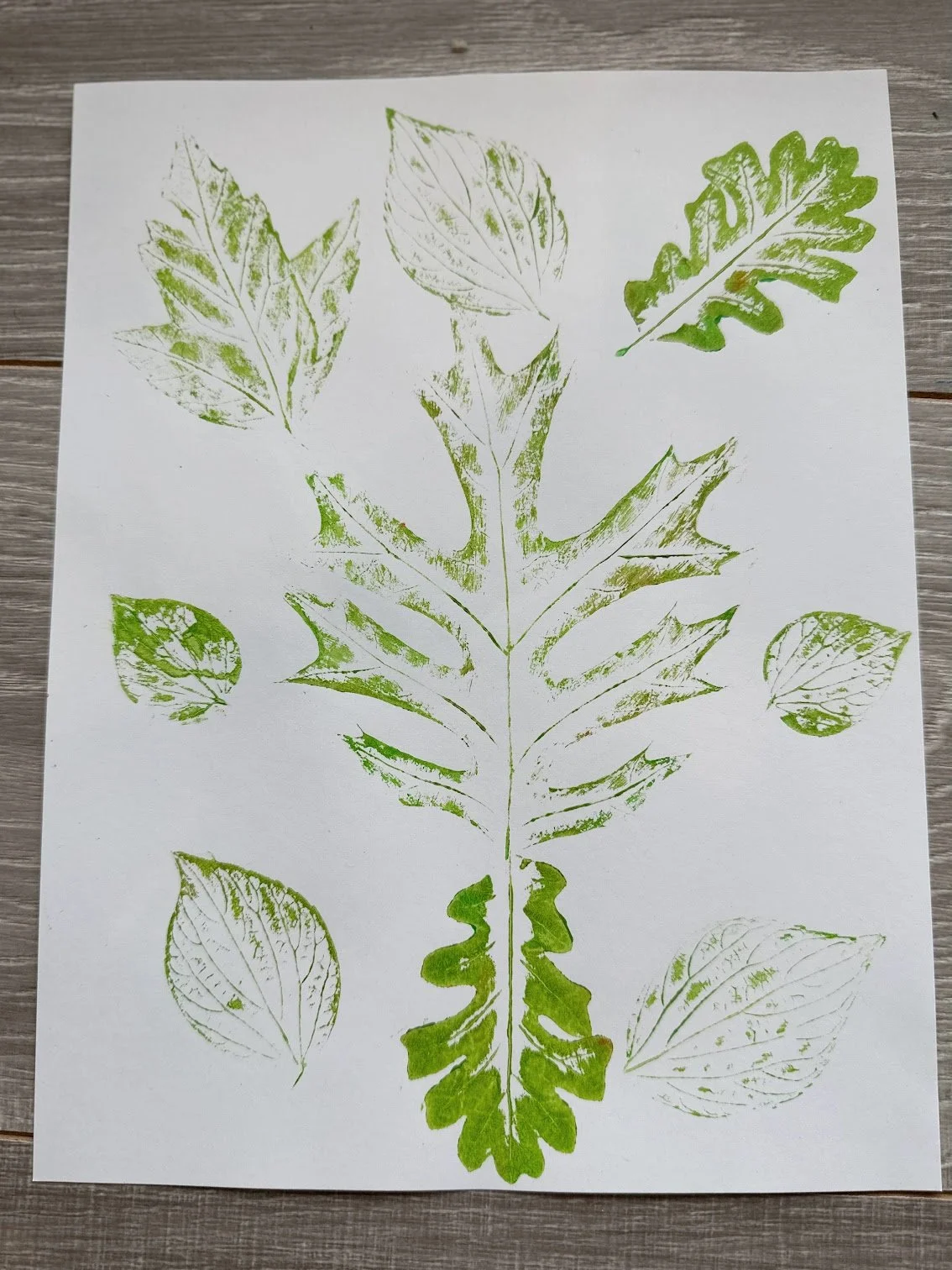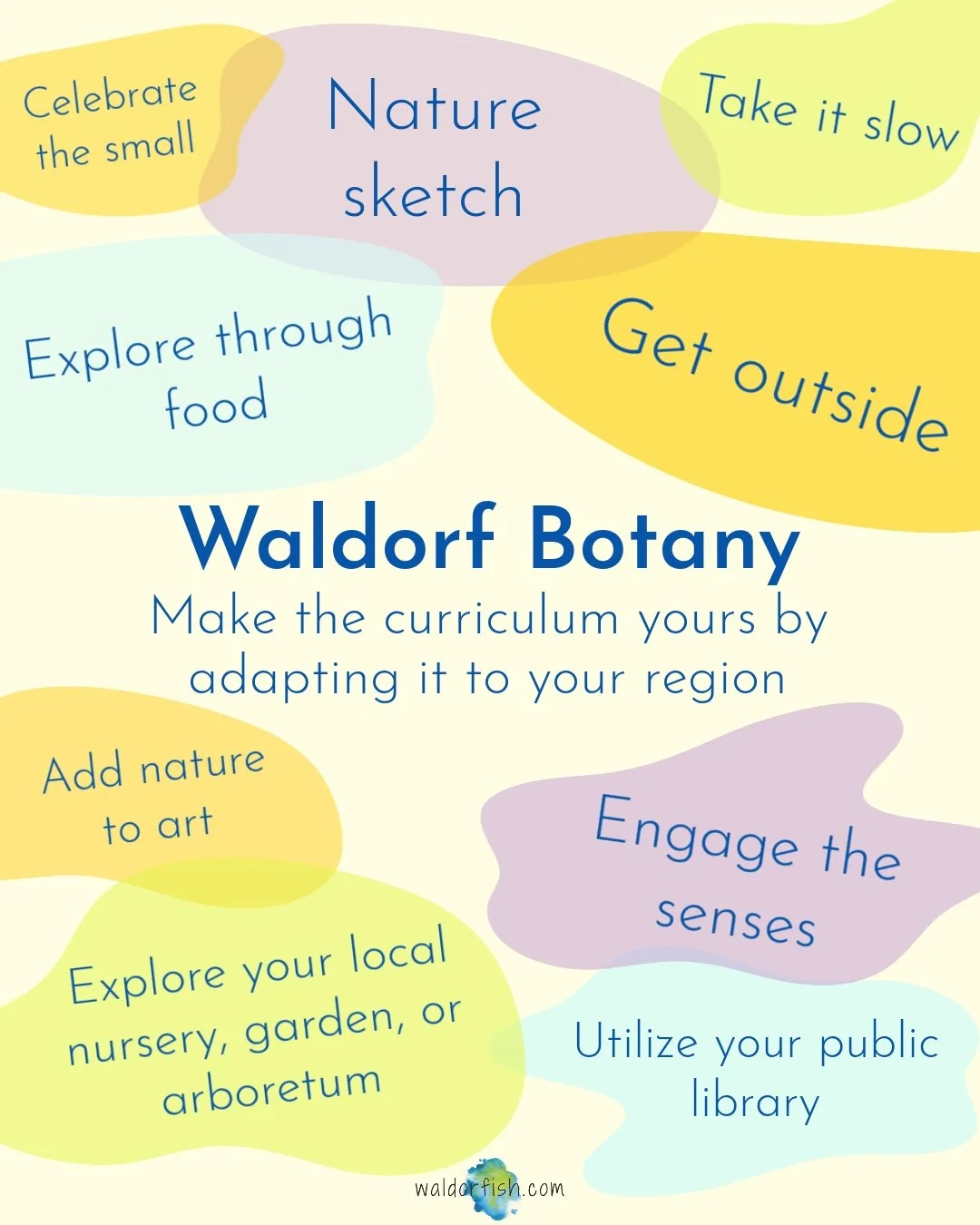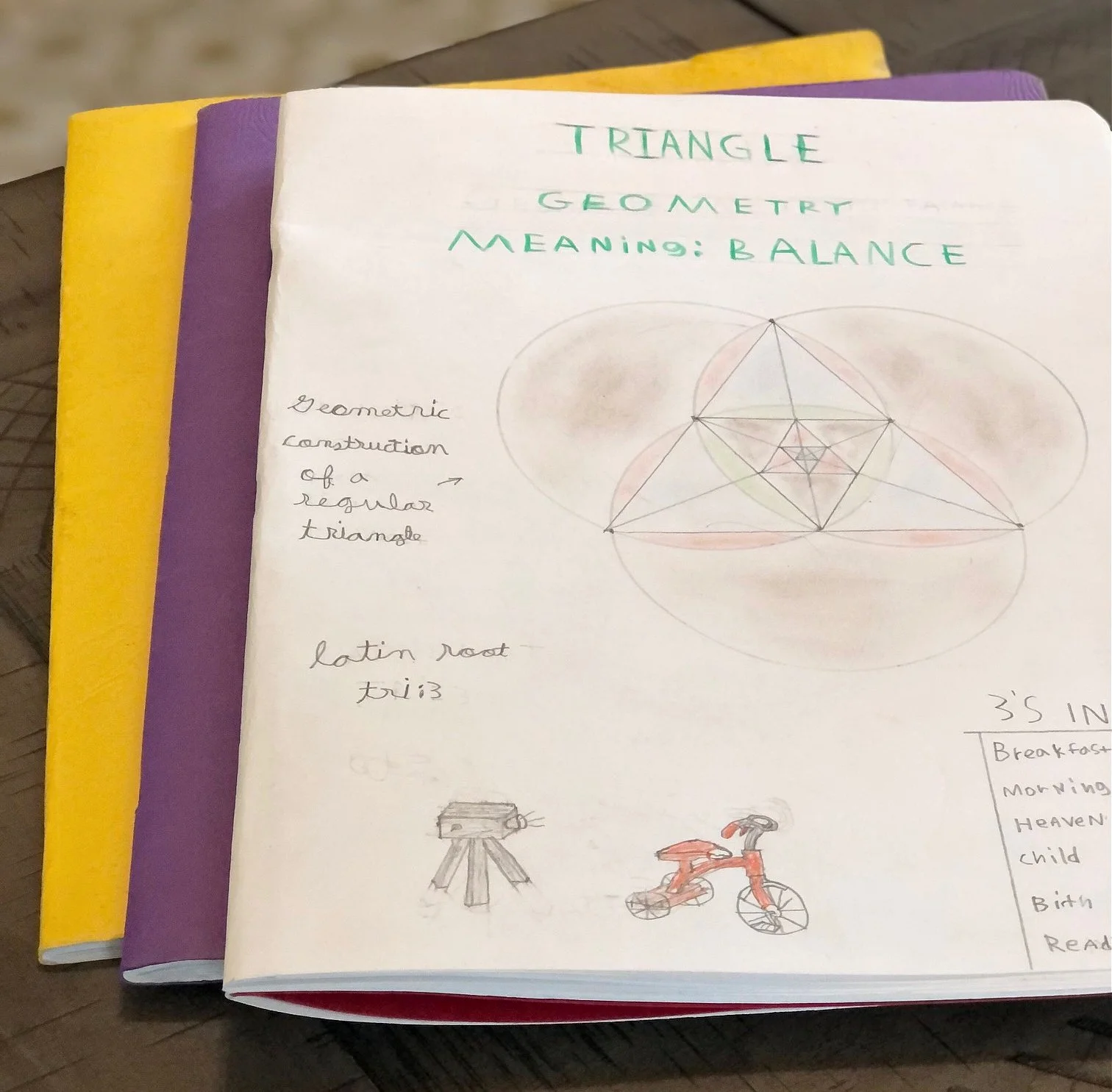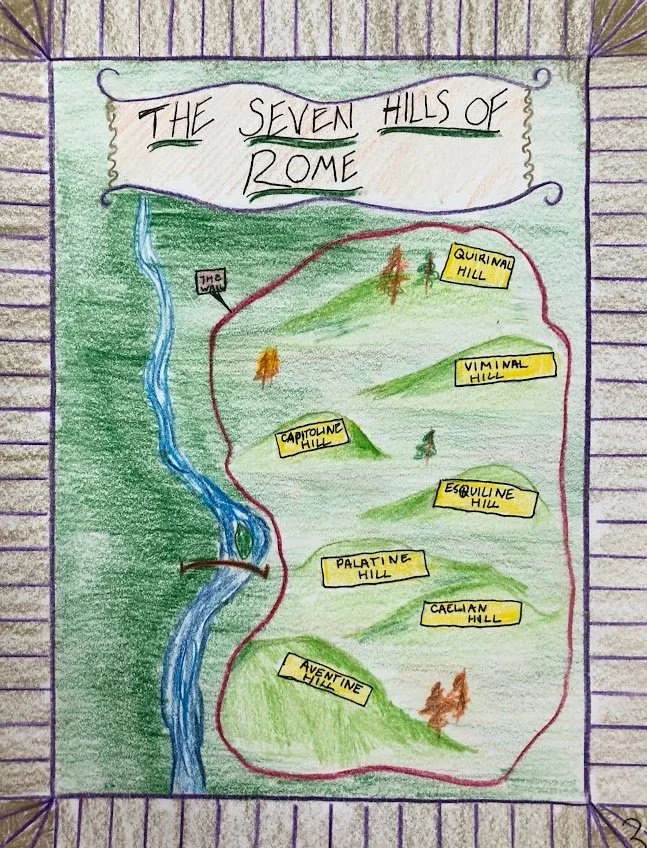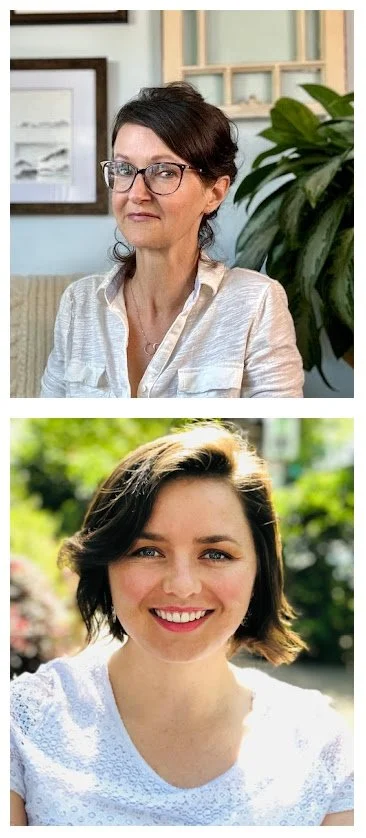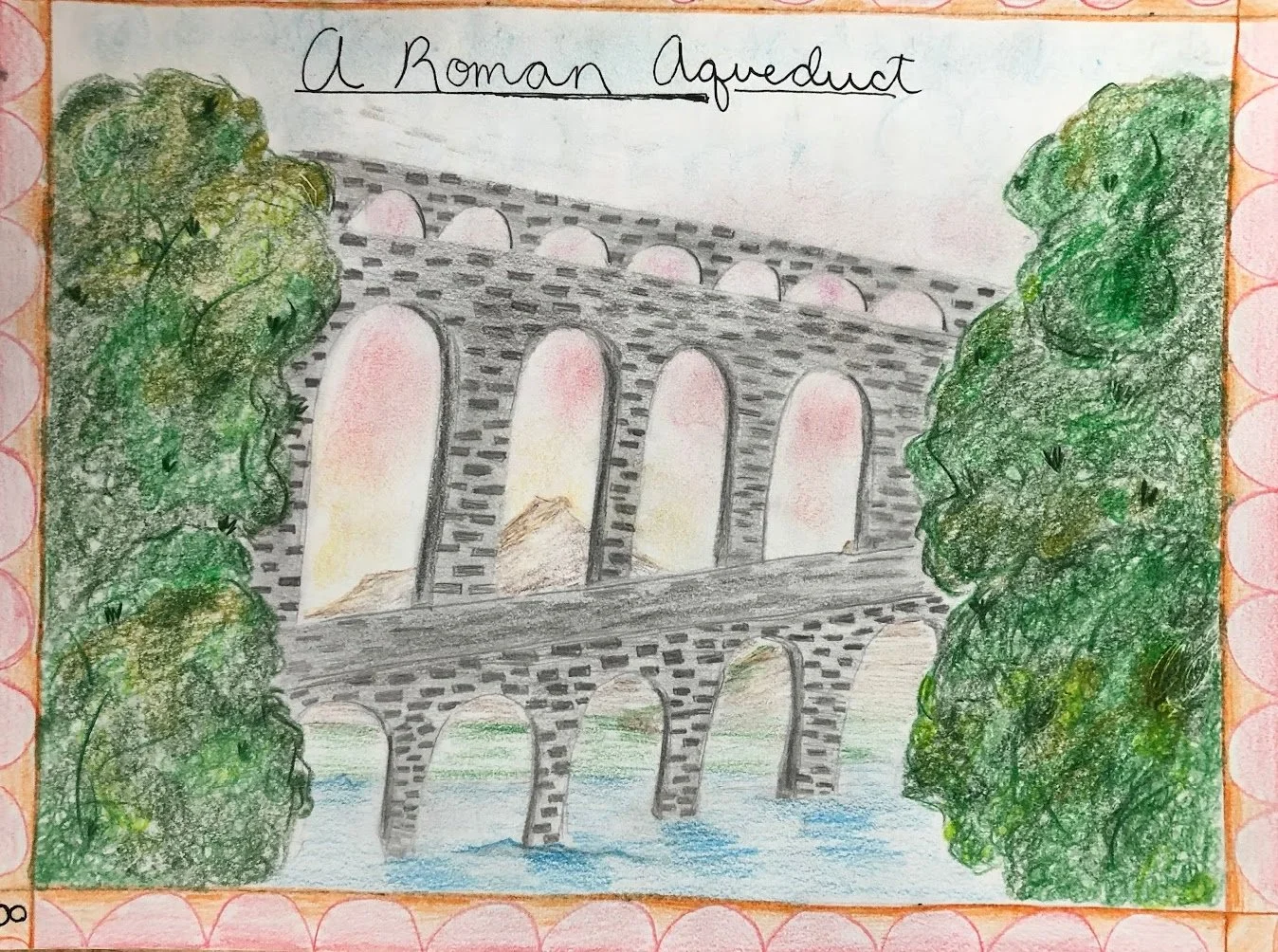
Waldorfish Blog
Waldorf Geometry: Why Do We Wait Until Sixth Grade to Introduce Tools?
Q: Why does Waldorf Geometry wait until grade six to introduce the compass and straightedge?
(This post is part of a series in which we answer the most common questions we receive in our inbox re: homeschooling, Waldorf curriculum/pedagogy, and whatever else comes our way! Click here to read more from the series!)
A: Waldorf education approaches geometry differently than other pedagogies, especially when it comes to the progression of how the material is presented and explored.
One of the primary ways that Waldorf geometry curriculum sets itself apart from other methods, is in the fact that we wait to introduce the compass and straightedge until the sixth grade.
Why? It all goes back to where the child is in their development!
Though simple, geometry tools help to create intricate, varied forms!
To explore sixth grade geometry, we first need to take a step back to fifth grade. The fifth grader is in a very special place in their development. They are experiencing a time of true balance in their physical body, and are still connected with the more mystical and magical aspects of the natural world, while beginning to explore the realities of the world in which they live.
Fifth grade geometry is designed to meet the child right where they’re at in this unique phase of development.
The geometry curriculum is explored using only freehand techniques, (no tools quite yet!) which allows the student to utilize their sense of balance, symmetry and appreciation of beauty all through the lens of geometry. Working freehand allows the child to truly connect on a deep, soul level with the forms; their ability to draw, create, and apply their skills in geometry comes only from within, independent of outside influence or assistance.
When a student enters into sixth grade, everything is beginning to change. They are entering puberty, meaning their emotional and physical being is in flux, and they are often ready for new and more challenging ways to learn.
It’s the perfect time to bring tools into the geometry curriculum: a straightedge for the lines, and a compass for the arcs!
A geometry form in progress- all created with a compass and straightedge!
The sixth grader craves a new way of learning, a different way of being challenged, and is looking for order in the new chaos they are experiencing inwardly. The geometric tools provide this experience in deeply impacting and meaningful ways.
With the compass and straightedge, the sixth grader is able to create forms that are precise, orderly, and follow a certain set of rules that are true not only on their paper, but in the whole of the natural world. They have explored these rules in fifth grade, but in a more artistic, free way, and now, they are ready to add in the tools to find a new, more precise perspective on geometry.
Because the student has already explored geometry in fifth grade, the sixth grader does not rely on the tools, instead, tools are used as a way to deepen and enhance their understanding of the vast world of geometry.
As the student is changing, so too must the curriculum, and sixth grade is the perfect time to bring in the addition of tools to geometry. The compass and straightedge, though seemingly simple, provide a vehicle for the student to further their exploration into geometry, and therefore, their exploration into the whole world- mathematics, biology, chemistry, art history - geometry is truly found in everything!
More of your questions answered below!
About the Authors
Robyn Beaufoy is Waldorfish’s CEO, and also a course instructor for Simple Season (coming soon!), Waldorf Art for Beginners, and Weekly Art Foundations. You’ll find her intuitive touches and influences throughout everything Waldorfish offers. Robyn has been in the world of education for over 25 years, with an MA in Education and a certification in Waldorf teaching - she also homeschooled both of her children for some of that time. In 2012 Robyn co-founded Waldorfish.com, creating it with the vision of making Waldorf inspired-art and pedagogy more accessible, joyful, and doable for homeschoolers all over the world.
Caitlin Amajor is Waldorfish’s course instructor for Geometry grades 5 & 6, and Botany, as well as our Administrative Assistant. From a young age, Caitlin has been immersed in Waldorf education, attending a Waldorf school from K-8. After receiving a BA in History, Caitlin gained her certification in Waldorf teaching, and spent seven years as a Waldorf class teacher in the upper grades. With a special fondness for watercolor painting and geometry, Caitlin loves bringing Waldorf education to her students all over the world, and seeing their own individuality and style bloom from the curriculum!
Waldorf Botany: Adapting the Curriculum to Your Region
One goal of Waldorf Education is to foster a child’s connection to the world and all its parts - this begins with cultivating observations of their own surroundings and the environment in which they live.
Waldorf education thrives when the curriculum is tailored to the region in which it is presented, enjoyed, and experienced.
This is true throughout the grades and across subjects - especially in fifth grade Botany!
This leaf printing activity is found in our Botany course- it’s a great way to mix art and nature in one!
At the beginning of the Botany blocks, students engage in a general exploration of the plant world, including examples that are familiar to everyone, no matter their location, such as the dandelion or the honeybee (as a pollinator.)
But to make the Botany curriculum really resonate with the student, educators can imbue the material with examples that connect the child to the region in which they live. After all, from the desert to the coast, to the most rural or urban setting, plant life is everywhere!
Our Botany course provides over 75 lessons, enough for two blocks of fifth grade Botany curriculum, as well as supplemental activity suggestions that will help you make the curriculum your own. Plus, it provides a multitude of in-depth tips, suggestions, hands-on demonstrations, a detailed supply list, and much more to tailor the curriculum to you and your region.
Here are some simple tips to get you started!
1. Get outside
Whether this outside time is in a park, on a hike, on your balcony, or in your backyard, encouraging unstructured time outdoors to observe and connect with the living things around you is incredibly valuable. Keep it simple- go outside!
2. Explore through food
Botany studies and food go together perfectly. Go to the grocery store, and pick out three new items from the produce section to try- what part of the plant are we eating? How does it taste? How does it make us feel? Try a new veggie soup recipe, brew an interesting new herbal tea, or make a colorful salad- the possibilities are endless!
3. Nature sketch
Nature sketching (which is explored more in-depth in our Botany course) is a simple yet impactful way to create connection between the child and the natural world. Slow down, sit in nature, and sketch what you see!
4. Take it slow
Whether you are sketching, cooking, or taking a walk, enjoy the process, and take it slowly. When it comes to encouraging observations and building connections, doing less truly cultivates more.
5. Celebrate the small
Sometimes, it feels like we need to do it all. For some, long strenuous hikes to see impressive landscapes and plant life is doable, but it’s also okay if small and simple is more your style! Appreciating the small, like your own little houseplant or the apartment complex’s flower bed, is a practice in finding the beauty of the plant world that is often overlooked.
6. Add nature to art
Wreath making is an activity that combines getting outside, engaging with the plant world, and creating something beautiful!
Celebrate the beauty of nature by incorporating it into your art lessons! Use your local vegetation to create a beautiful wreath (there’s a tutorial for this inside our Botany course!), collect leaves to use for paint printing, weave flowers and grasses for a crown…the options are endless! Working with the plant life around you to create beautiful artwork is a wonderful way to build appreciation and wonder of the natural world in your own region.
7. Engage the senses
The Botany blocks are the perfect opportunity to smell, feel, taste, see and touch! Make your own essential oils, create a moss garden, taste a variety of new grains or vegetables, observe the fall colors change, and enjoy touching the different textures of tree bark. So much can be learned from these sensory experiences.
8. Explore your local nursery/garden/arboretum
Your local plant nursery, community garden or arboretum will be a wonderful, inexpensive place to explore, see new plants, and gain the insights of experts as well! Enjoy the minimal prep a visit requires, and see what treasures you discover.
9. Utilize your public library
Your local librarian is an excellent resource- ask where your local plant section is, and see what you find! Books on local plant life, gardening books, cookbooks that utilize local ingredients - you never know what you might find that will spark interest and inspiration!
Waldorf Education's emphasis on fostering a child's connection to the world is found throughout the fifth-grade Botany curriculum, and there are so many simple yet impactful ways to make the curriculum yours.
Enjoy!
About the Authors
Robyn Beaufoy is Waldorfish’s CEO, and also a course instructor for Simple Season (coming soon!), Waldorf Art for Beginners, and Weekly Art Foundations. You’ll find her intuitive touches and influences throughout everything Waldorfish offers. Robyn has been in the world of education for over 25 years, with an MA in Education and a certification in Waldorf teaching - she also homeschooled both of her children for some of that time. In 2012 Robyn co-founded Waldorfish.com, creating it with the vision of making Waldorf inspired-art and pedagogy more accessible, joyful, and doable for homeschoolers all over the world.
Caitlin Amajor is Waldorfish’s course instructor for Geometry grades 5 & 6, and Botany, as well as our Administrative Assistant. From a young age, Caitlin has been immersed in Waldorf education, attending a Waldorf school from K-8. After receiving a BA in History, Caitlin gained her certification in Waldorf teaching, and spent seven years as a Waldorf class teacher in the upper grades. With a special fondness for watercolor painting and geometry, Caitlin loves bringing Waldorf education to her students all over the world, and seeing their own individuality and style bloom from the curriculum!
More Botany resources you will enjoy:
What are Waldorf Main Lesson Books Used For?
Q: In Waldorf education, main lesson books are used throughout the grades as part of a student’s educational experience: what are they used for?
(This post is part of a series in which we answer the most common questions we receive in our inbox re: homeschooling, Waldorf curriculum/pedagogy, and whatever else comes our way! Click here to read more from the series!)
A: It is common to hear that Waldorf students “make their own textbooks,” which are called main lesson books. But, this image of “textbook” isn’t quite accurate.
A first grader’s main lesson book page from mathematics- “David Divide” sharing equally!
A Waldorf main lesson book does not show what a student will learn, it shows what a student has learned. The main lesson book is a tangible representation of a student's developmental and artistic growth, serving as a unique account of their educational journey.
They are a living record of the child’s development– they show what they have experienced, mastered and enjoyed!
A main lesson book is slowly built over the course of a block*, one page at a time with the guidance of the educator. Students don't just write in main lesson books; they illustrate, draw, and craft visual representations of the concepts they are learning. They truly are a product of art and academics integrating as one!
*What is a block, exactly? Waldorf education is often organized into blocks, where one subject such as History, Language Arts or Math, is studied each day for about three to four weeks. This structure encourages the student to progressively build up their understanding and mastery of a single subject, and a chance to really focus on and explore the curriculum.
A seventh grader’s geometry main lesson book- notice the customized details!
In the early grades (1-4), main lesson books often emphasize foundational skills. For instance, in mathematics, students may start with the basic concepts of numbers and counting, with corresponding illustrations to reinforce understanding, such as “Prince Plus” to represent the process of addition. In language arts, students may draw letters and images inspired by classic fairy tales, enhancing both writing and artistic skills.
A student’s main lesson book page from the sixth grade Roman History block- a strong border is a wonderful way to frame the page!
As students progress through elementary school, the complexity of their main lesson book entries grows as well, and the students’ individuality is expressed more and more. Science lessons may involve detailed drawings of plant life cycles or experiments, while history lessons might include detailed timelines with illustrations depicting key events.
Here are some examples of main lesson book page ideas across the grades:
A first grader’s drawing of the four processes (multiplication, addition, subtraction, and division) as four little gnomes during a Math block
A fifth grader’s illustration of the stages of a sprouting seed during a Botany block
A seventh grader using a compass and straightedge to recreate Leonardo da Vinci’s “Vitruvian Man” in the Renaissance block
An eighth grader creating a chart to show their observations of different sugar products during their Organic Chemistry block
A fourth grader writing a paragraph about a cuttlefish, to demonstrate their newfound ability to use adjectives and adverbs.
Our own Caitlin Amajor’s fourth grade animal report main lesson book page!
The possibilities are endless when it comes to creating main lesson books - and Waldorf schools, Waldorf educators, at-home educators, homeschooling groups, etc. all have their own methods, standards and approaches to creating them!
Overall, there is no wrong way to create a main lesson book- they are, in the end, a method for the student to actively show their educational journey through artistic and academic expression.
About the Authors
Robyn Beaufoy is Waldorfish’s CEO, and also a course instructor for Simple Season (coming soon!), Waldorf Art for Beginners, and Weekly Art Foundations. You’ll find her intuitive touches and influences throughout everything Waldorfish offers. Robyn has been in the world of education for over 25 years, with an MA in Education and a certification in Waldorf teaching - she also homeschooled both of her children for some of that time. In 2012 Robyn co-founded Waldorfish.com, creating it with the vision of making Waldorf inspired-art and pedagogy more accessible, joyful, and doable for homeschoolers all over the world.
Caitlin Amajor is Waldorfish’s course instructor for Geometry grades 5 & 6, and Botany, as well as our Administrative Assistant. From a young age, Caitlin has been immersed in Waldorf education, attending a Waldorf school from K-8. After receiving a BA in History, Caitlin gained her certification in Waldorf teaching, and spent seven years as a Waldorf class teacher in the upper grades. With a special fondness for watercolor painting and geometry, Caitlin loves bringing Waldorf education to her students all over the world, and seeing their own individuality and style bloom from the curriculum!
Waldorf Art: How is Art Incorporated into the Waldorf Middle Grades, 5-8?
Q: How is art incorporated into the Waldorf middle grades, 5 through 8?
(This post is part of a series in which we answer the most common questions we receive in our inbox re: homeschooling, Waldorf curriculum/pedagogy, and whatever else comes our way! Click here to read more from the series!)
A: Art is woven into every aspect of the Waldorf upper grades curriculum, no matter the subject!
(And just so we’re all on the same page, we’re using ‘middle grades’ and ‘upper grades’ interchangeably to refer to the grades 5-8.)
Whether in history, science, or math, the upper grades student is continuously learning through artistic skills and expression.
It is common in today’s world to think of art as its own stand-alone subject; many students experience “art class” where there is a specific time in a student’s school day for art, and otherwise, they are focusing on non-art subjects like math or science.
A pencil drawing from a sixth grader’s main lesson book- Roman history coming to life!
But in Waldorf education, art is naturally incorporated into each subject- it is not a separate subject, it is the mechanism used to explore, study, and understand everything!
So, what does this art curriculum really look like in the upper grades?
For example, in seventh grade, students explore the Renaissance and all the discoveries, inventions and artistic movements that arose from that time. Instead of just listening to the biographies of great artists such as Michaelanglo, Raphael, or da Vinci, the students will copy their works of art in detail: a masterclass in figure drawing! Though history may be the focus, students engage with the curriculum through their own artistic endeavors.
The skills built through seventh grade figure drawing lead directly into the next grade’s curriculum. In eighth grade, students explore the human body in an Anatomy block. They will learn about muscles, the nervous system, how various organs function, and much more. Skills in figure drawing will grow all the more through this block; drawing a human hand with the knowledge of its skeletal and muscular structure creates a deeper connection to the beauty and function of the human body. It’s artistic work supporting scientific study!
As well, the upper grade student studies Physics from sixth through eighth grade, which includes exploring light and all its properties. The perfect art medium to deepen one’s study of light is charcoal. Drawing with charcoal encourages a student to really observe light and how it travels, reflects, bounces, and highlights an object, and how the lack of light creates shadow and depth. Drawing light and darkness in an accurate, beautiful way requires the understanding of light itself- once again, art and science working as one!
Stunning charcoal drawings from a seventh grade Waldorf classroom- we especially love how each has their own style and personality.
The actual outcome of the final piece of art is of secondary importance to the process of creating and exploring connections. The act of creating the art is a process which supports their learning.
Truly, art is woven throughout the upper grades; here are some examples:
Pencil Drawings- Found in geometry forms, nature sketching, physiology and anatomy diagrams, mathematical proof work, astronomy observational notes and more! Pencil drawings are also the predominant art medium used in creating main lesson books.
Perspective Drawing- A skill learned most often in seventh grade, sometimes in its own short block. The process of perspective drawing to show depth and distance is used in studying the Renaissance, architecture, geological landscapes, astronomy illustrations and observations, and more.
Charcoal Drawing- Commonly introduced in sixth grade, this artistic medium is used throughout the upper grades, especially to study and illustrate the properties of light in physics and chemistry blocks. As well, charcoal drawing is used for portrait drawing or historical figures, detailed human anatomical studies, art-history inspired works, and more!
Watercolor Painting- Though this art medium is done more often in the lower grades, middle school students will continue to engage with watercolor painting on a regular basis! From botany paintings of flowers, to a colorful volcanic eruption of red and oranges, painting connects to nearly every aspect of the curriculum.
Clay Work- Working with clay is a powerful, sensory experience for the middle school student. It encourages the student to build and create from a new, 3D perspective, which is very different from many of the art mediums they have become familiar with thus far! Students may sculpt the bones of a human leg, a Roman aqueduct, an example of layers of sedimentary rock, a bust of a historical figure, and more.
Students often work with clay in the eighth grade as they study the Platonic Solids, and elsewhere in the upper grades too!
The list could go on and on! Truly, there are no bounds around how art can be used as a tool for learning in the upper grades.
Art is in everything, and an essential cornerstone to all the curriculum studies of the upper grades student.
Looking to bring Waldorf upper grades art curriculum into your homeschooling routine?
About the Authors
Robyn Beaufoy is Waldorfish’s CEO, and a course instructor for two of our courses - Waldorf Art for Beginners and Weekly Art Foundations. You’ll find her intuitive touches and influences throughout everything Waldorfish offers! Robyn has been in the world of education for almost 30 years, with an MA in Education and a certification in Waldorf teaching - she also homeschooled both of her children. In 2012 Robyn co-founded Waldorfish.com, creating it with the vision of making Waldorf inspired-art and pedagogy more accessible, joyful, and doable to homeschoolers all over the world.
Caitlin Amajor is Waldorfish’s course instructor for Geometry grades 5 & 6, and Botany, as well as our Administrative Assistant. From a young age, Caitlin has been immersed in Waldorf education, attending a Waldorf school from K-8. After receiving a BA in History, Caitlin gained her certification in Waldorf teaching, and spent seven years as a Waldorf class teacher in the upper grades. With a special fondness for watercolor painting and geometry, Caitlin loves bringing Waldorf education to her students all over the world, and seeing their own individuality and style bloom from the curriculum!
Looking for something?
Welcome to Waldorfish! We started this adventure in 2012 out of a desire to make Waldorf training more accessible to class teachers in remote locations and to homeschooling families everywhere! Read more, click here.
WE WON! Our Weekly Art courses were voted “best interactive art program.” Learn more about the award, here.
A few of our most popular blog posts:









